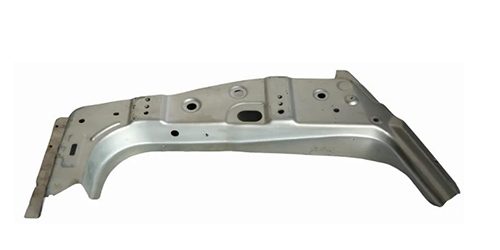The resistance welding process of automobile sheet metal parts usually includes the following steps:
1. **Preparation work**:
Select an appropriate resistance welding machine and adjust welding parameters such as welding current, welding time, and electrode pressure according to the material and thickness of the sheet metal part.
At the same time, ensure that the surface of the sheet metal part is clean and free of impurities such as oil stains and rust.
2. **Positioning and clamping**:
Place the sheet metal part in a welding fixture to ensure its accurate and stable position.
Use a clamping device to clamp the sheet metal part to prevent movement during the welding process.
3. **Welding operation**:
Contact the electrode tip with the sheet metal part and apply welding current and electrode pressure.
During the welding process, resistance heat will be generated between the electrode tip and the sheet metal part, causing local melting of the sheet metal part and forming a weld spot. The control of welding time and electrode pressure is very important.
Too long or too short welding time and too large or too small electrode pressure will affect the welding quality.
4. **Weld spot inspection**:
After welding is completed, the weld spot needs to be inspected. Check the appearance quality of the weld spot, such as whether the weld spot is uniform and full, and whether there are defects such as pores and slag inclusions.
At the same time, it is also necessary to check the strength of the weld spot, such as conducting tensile tests and shear tests to ensure that the strength of the weld spot meets the requirements.
5. **Subsequent processing**: If there are defects in the weld spot, it needs to be repaired or rewelded. If the weld spot quality is good, subsequent processing such as grinding and painting can be carried out to improve the appearance quality of the sheet metal part.
It should be noted that the resistance welding process requires professional equipment and operators, and strict operation according to operating procedures is required to ensure welding quality and safety.






